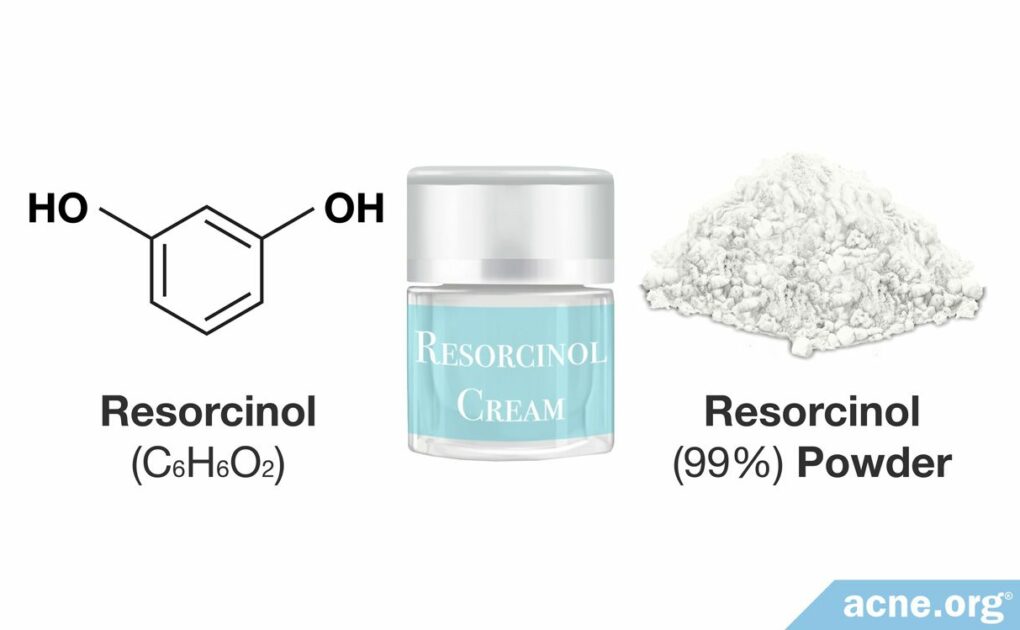Resorcinol Is a Peeling Agent That Can Exfoliate the Skin

The Essential Info
What It Is: Resorcinol is one of five FDA-approved over-the-counter acne medications, the others being benzoyl peroxide, salicylic acid, sulfur, and adapalene (0.1%). However, due to its tendency to cause more severe side effects when compared to other over-the-counter medications, it is rarely found in acne treatment products. When it is found in products, it is almost never on its own, and is instead combined with other medications, particularly sulfur.
How It Works: Resorcinol exfoliates the skin by breaking apart dead skin cells, allowing them to flake off the skin’s surface. This exfoliation then stimulates new skin cell production to replace these dead skin cells, keeping the skin turning over and helping to prevent clogged pores and acne.
Concentrations: Resorcinol is available as an over-the-counter (OTC) treatment at concentrations less than 2%. It is also used in professionally-administered chemical peels in concentrations up to 50%.
Side Effects: Lower concentrations of resorcinol cause mild side effects, including skin irritation, redness, peeling, dizziness, and hyperpigmentation (skin darkening). Higher concentrations of resorcinol can cause systemic toxicity (absorption of substance into the bloodstream) and more severe side effects, including rare side effects like cold sweats, fainting, purple-black urine, hyperthyroidism, and grayish discoloration of the skin.

The Science
While resorcinol is rarely found in over-the-counter (OTC) acne treatment products, it is one of five over-the-counter medications that the Food and Drug Administration (FDA) has approved for the treatment of acne. The others include benzoyl peroxide, salicylic acid, sulfur, and adapalene (at 0.1% strength), which are much more common than resorcinol in acne treatments.
Resorcinol works by exfoliating the skin. This means that it causes dead skin cells to shed from the skin. This is relevant to acne because dead skin cells can clog pores. Exfoliation also stimulates the skin to produce new skin cells to replace the ones that were shed, which keeps the skin turning over. This is also thought to help prevent future clogs.
Resorcinol is available both as an over-the-counter treatment and in professionally administered chemical peels, but is rarely used on its own.
- Over-the-counter treatments: Over-the-counter resorcinol acne treatments contain up to 2% resorcinol.
- Professionally administered peels: Professionally administered resorcinol peels can contain up to 50% resorcinol, though using this high of a concentration is rare because it can cause adverse side effects. Concentrations between 5% and 25% are more commonly used.1,2
Let’s now explore in more detail how resorcinol works to clear acne.
How Resorcinol Works to Clear Acne
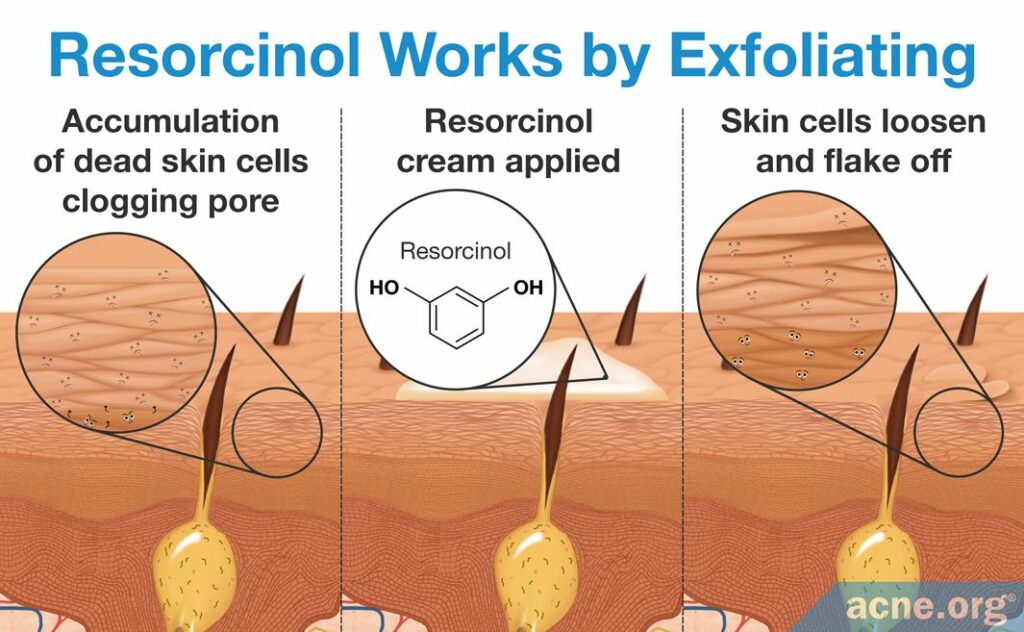
In normal, healthy skin, dead skin cells shed from the skin as they should. In acne, however, dead skin cells stick together and accumulate, causing clogged pores, which then turn into acne lesions.
This exfoliation also helps the skin look and feel healthier by stimulating new skin cell production.
Now that we know how resorcinol works to clear acne, let’s examine how well it works.
How Effective Is Resorcinol?
The efficacy of resorcinol on acne depends on its concentration. Higher concentrations are more effective.
Resorcinol is available in concentrations ranging from 2 – 50%. Resorcinol in concentrations greater than 10% is most effective but also comes with more severe side effects.
Over-the-counter resorcinol products, which contain up to 2% resorcinol, present fewer side effects than those containing higher concentrations and can be used daily.2
Clinical studies on resorcinol’s effectiveness
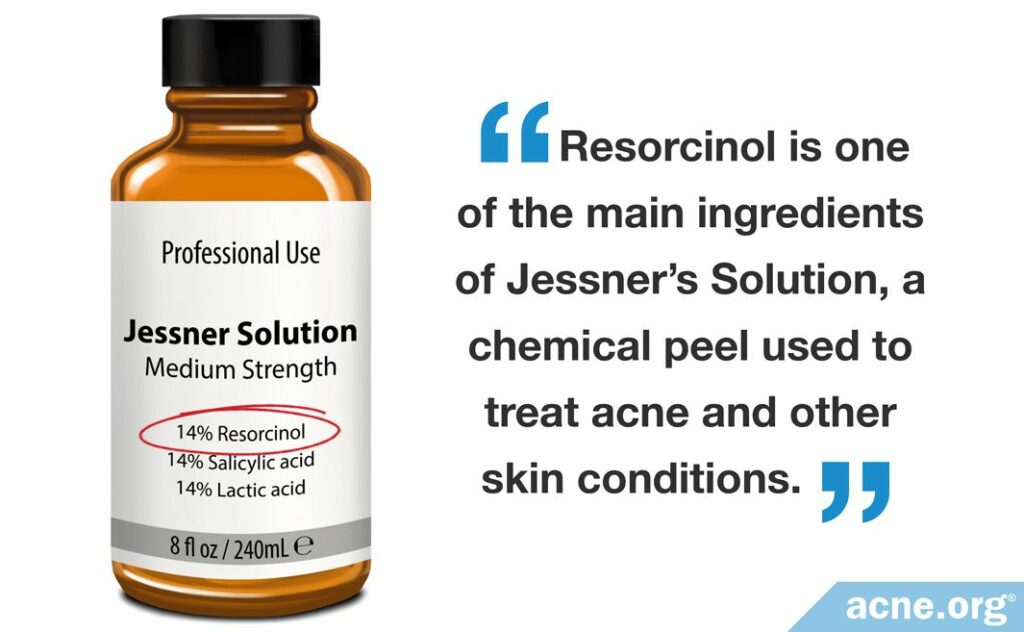
Scientists have not studied the ability of resorcinol on its own to treat acne, and have only studied it in higher percentages.
However, resorcinol is one of the main ingredients of Jessner’s solution, which is a chemical peel commonly used to treat skin conditions, including acne. Jessner’s solution has been studied for how effective it is in clearing acne. It contains:
- 14% resorcinol
- 14% salicylic acid
- 14% lactic acid
Researchers have compared the efficacy of Jessner’s solution peels to that of glycolic acid peels and salicylic acid peels. Both glycolic acid peels and salicylic acid peels are common acne treatments. These studies have found that Jessner’s solution is similar in efficacy to the glycolic acid peel but less effective than the salicylic acid peel.3-7
Expand to read details of studies
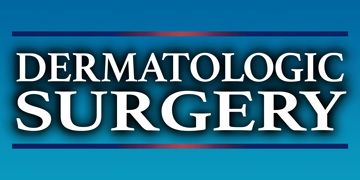
A 1991 study published in Dermatologic Surgery compared the efficacy of Jessner’s solution to that of a 70% glycolic acid peel to treat acne. Glycolic acid peels are a common acne treatment that can partially clear acne. The study found that after three applications of either chemical peel, both Jessner’s solution and glycolic acid were able to clear acne to some extent. However, most of the study participants preferred the glycolic acid peel, with patients reporting, “[T]he treatment with Jessner’s solution resulted in discomfort” due to the exfoliation. Further, because Jessner’s solution is a mixture of resorcinol, salicylic acid, and lactic acid, it is unclear to what extent resorcinol played a role in clearing the acne lesions in this study. Nevertheless, because it can exfoliate the skin, it likely had some effect on the clearing of acne.3

A 2013 study also published in Dermatologic Surgery compared the efficacy of Jessner’s solution to that of a 30% salicylic acid peel to treat acne. Salicylic acid peels are a common acne treatment that can partly clear acne. The study found that after three applications of the chemical peel, salicylic acid was slightly better at clearing inflammatory acne lesions like papules, pustules, nodules, and cysts. However, Jessner’s solution and salicylic acid were both able to clear non-inflammatory acne lesions, such as whiteheads and blackheads, to a similar extent. As in the previous study, because Jessner’s solution is a mixture of resorcinol, salicylic acid, and lactic acid, it is unknown to what degree resorcinol played a role in clearing the acne lesions in this study. Nonetheless, because it can exfoliate the skin, it likely demonstrated some effect on the clearing of acne.4
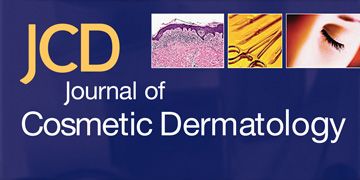
A 2017 study published in the Journal of Cosmetic Dermatology compared the efficacy of Jessner’s solution to a 30% salicylic acid peel. The researchers tested the peels on 40 patients with mild-to-moderate acne. Half of the patients received Jessner’s peel every two weeks for a total of six sessions, while the other half received a salicylic acid peel on the same schedule. Unlike the previous study, this study found that Jessner’s peel and salicylic acid were equally effective at treating inflammatory acne lesions like papules and pustules, whereas salicylic acid was better at treating non-inflammatory lesions.5
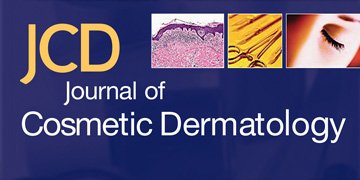
Another 2017 study published in the Journal of Cosmetic Dermatology compared the efficacy of Jessner’s solution to a chemical peel containing 50% glycolic acid + 0.5% salicylic acid. The researchers tested the two peels on 20 patients with mild-to-moderate acne. Each subject applied one chemical peel to the left side of the face and the other chemical peel to the right side of the face for 2 minutes. The patients repeated this procedure again 2 weeks later. At week 4, the researchers examined each patient’s acne and found a significant decrease in the number of both inflammatory and non-inflammatory acne lesions. Out of 20 patients, 13 experienced an improvement in acne on the side treated with Jessner’s solution, and 12 experienced an improvement on the side treated with 50% glycolic acid + 0.5% salicylic acid. The scientists concluded that both treatments were equally effective, but that Jessner’s solution caused more side effects compared to the glycolic acid + salicylic acid chemical peel.6
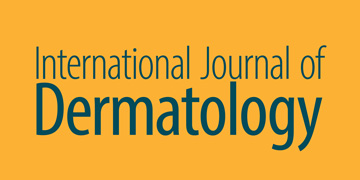
Similarly, a 2020 study published in the International Journal of Dermatology found that Jessner’s solution and 30% salicylic acid were equally effective in the treatment of acne. This study included 36 subjects, who were randomly treated with one of the chemical peels for 3-5 minutes. Each patient received 3 treatment sessions. At the end of the study, the researchers found that 76.4% of patients treated with Jessner’s solution experienced a significant improvement in acne compared to 85.3% of patients treated with salicylic acid. They also reported that side effects were mild and similar for both treatments.7
Resorcinol Side Effects
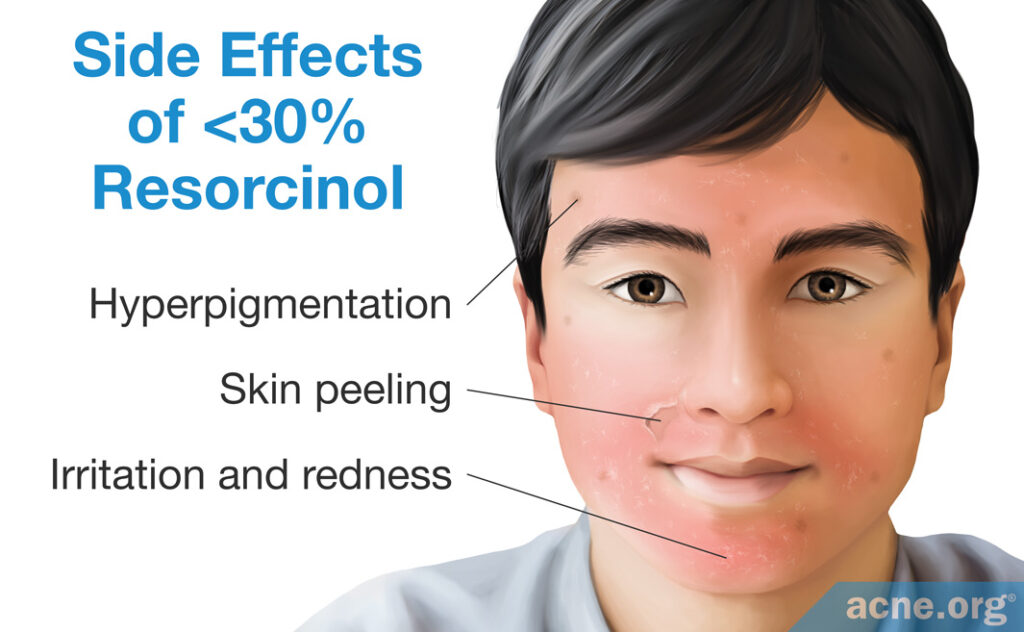
The main side effects of resorcinol when used in concentrations lower than 30%, which includes OTC products as well as some professionally administered peels, are:
- Skin irritation
- Redness
- Excessive skin peeling
- Hyperpigmentation (skin darkening that is reversible), especially in Asian patients1,2,8
When used in lower concentrations (up to 2%) in over-the-counter products, side effects are much less pronounced.
The side effects of resorcinol when used in concentrations from 30 – 50% can be much more severe and include symptoms of systemic toxicity (absorption into the bloodstream). These side effects are rare and only occur in cases of excessive daily exposure.
These side effects include:
- Cold sweats
- Dizziness
- Fainting
- Purple-black urine
- Hyperthyroidism (which causes sudden weight changes, increased heart rate, appetite, and sweating, and muscle weakness)
- Grayish discoloration of skin
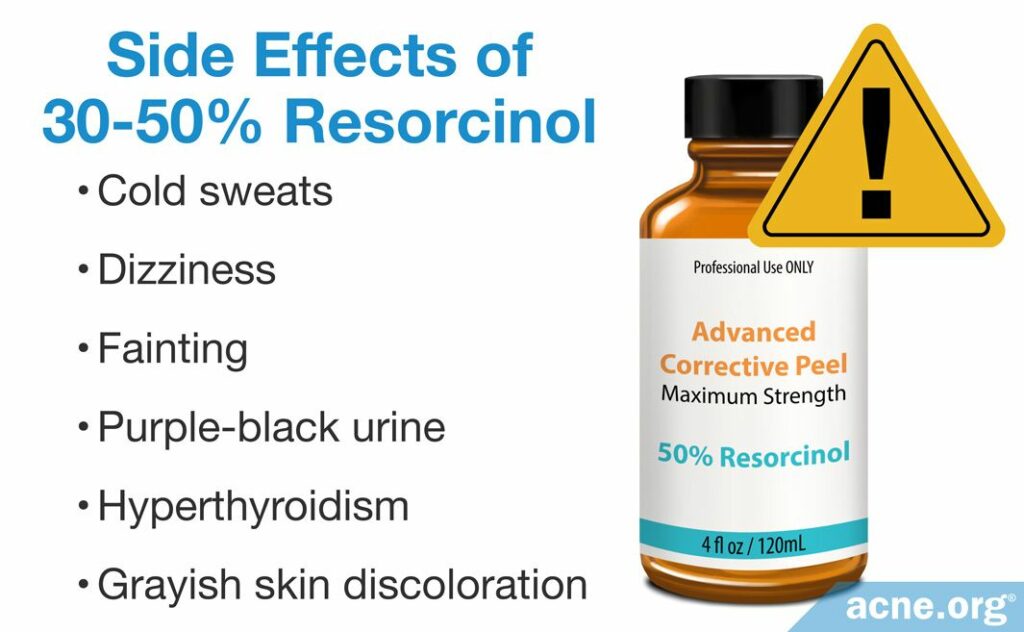
Systemic toxicity can be observed if a high concentration of resorcinol is frequently applied to skin ulcers or other damaged skin areas, which allow for it to enter the bloodstream. In other words, although these side effects are severe, they are rare and only appear if excessive amounts of resorcinol are used daily. Therefore, researchers believe that the use of resorcinol in concentrations up to 20% is generally safe and does not produce serious side effects or signs of systemic toxicity. Higher concentrations of resorcinol can also be used, but need to be applied by a skin care professional, who can properly apply resorcinol and watch for the appearance of more severe side effects.1,9,10
References
- Oremović, L., Bolanča, Ž. &Šitum, M. Chemical peelings–when and why? Acta Clin Croat 49, 545 – 548 (2010). https://www.ncbi.nlm.nih.gov/pubmed/21830470
- Jemec, G. B., Revuz, J. & Leyden, J. J. Hidradenitis Suppurativa. 150 – 160 (Springer Verlag, Berlin Heidelberg, 2006). https://link.springer.com/book/10.1007%2F978-3-540-33101-8
- Kim, S. W., Moon, S. E., Kim, J. A. & Eun, H. C. Glycolic Acid versus Jessner’s Solution: Which Is Better for Facial Acne Patients? Dermatol Surg 25, 270 – 273 (1999). https://www.ncbi.nlm.nih.gov/pubmed/10417580
- Bae, B. G. et al. Salicylic Acid Peels Versus Jessner’s Solution for Acne Vulgaris: A Comparative Study. Dermatol Surg 39, 248 – 254 (2013). https://www.ncbi.nlm.nih.gov/pubmed/23121256
- Dayal, S., Amrani, A., Sahu, P. & Jain, V. K. Jessner’s solution vs. 30% salicylic acid peels: a comparative study of the efficacy and safety in mild-to-moderate acne vulgaris. J Cosmet Dermatol 16, 43-51 (2017). https://www.ncbi.nlm.nih.gov/pubmed/27557589
- In Jae, J., Dong Ju, H., Dong Hyun, K., Yoon, M. S. & Lee, H. J. Comparative study of buffered 50% glycolic acid (pH 3.0) + 0.5% salicylic acid solution vs Jessner’s solution in patients with acne vulgaris. J Cosmet Dermatol 17, 797-801 (2018). https://pubmed.ncbi.nlm.nih.gov/29164826/
- How, K. N., Lim, P. Y., Wan Ahmad Kammal, W. S. L. & Shamsudin, N. Efficacy and safety of Jessner’s solution peel in comparison with salicylic acid 30% peel in the management of patients with acne vulgaris and postacne hyperpigmentation with skin of color: a randomized, double-blinded, split-face, controlled trial. Int J Dermatol 59, 804-812 (2020). https://pubmed.ncbi.nlm.nih.gov/32447767/
- Serrano, G., Fortea, J. M., Millan, F., Botella, R. & Latasa, J. M. Contact allergy to resorcinol in acne medications: Report of three cases. J Am Acad Dermatol 26, 502 – 504 (1992). https://www.ncbi.nlm.nih.gov/pubmed/1532968
- Cassano, N., Alessandrini, G., Mastrolonardo, M. & Vena, G. A.Peeling agents: toxicological and allergological aspects. J Eur Acad Dermatol Venereol 13, 14 – 23 (1999). https://www.ncbi.nlm.nih.gov/pubmed/10565625
- Lynch, B. S., Delzell, E. S. & Bechtel, D. H. Toxicology review and risk assessment of resorcinol: thyroid effects. Regul Toxicol Pharmacol 36, 198-210 (2002). https://pubmed.ncbi.nlm.nih.gov/12460754/
 Acne.org Products
Acne.org Products